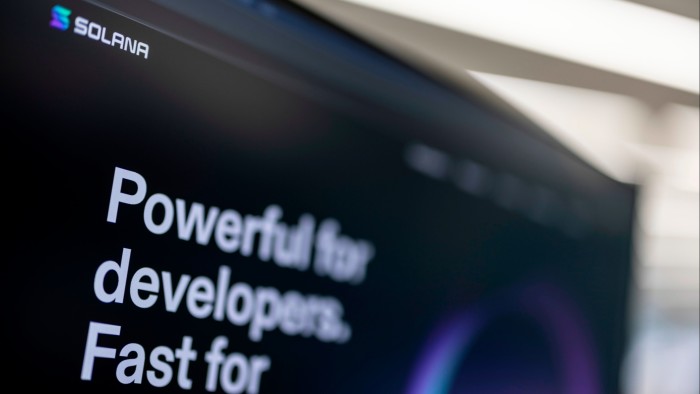Unlock the Editor’s Digest for free
Roula Khalaf, Editor of the FT, selects her favourite stories in this weekly newsletter.
A group of big banks and other financial institutions are stepping up their efforts to tokenise global stock and bond markets by using solana, the blockchain best known for hosting the memecoins of Donald and Melania Trump.
R3, a UK software group that has been developing blockchains for some of these big institutions, on Thursday agreed a deal with the Solana Foundation that will allow it and its customers to use the solana blockchain. The foundation, in turn, will make an undisclosed investment into R3, while its president, Lily Liu, will join R3’s board.
R3 has about $10bn of tokenised assets on its networks and counts Euroclear, HSBC, Bank of America, the Italian central bank and the Monetary Authority of Singapore as customers.
The move underscores how some of the financial industry’s biggest banks, fund managers and exchanges are experimenting with tokenised assets, such as shares and investment funds, on digital ledgers that are publicly available and maintained.
Proponents of tokenisation believe that putting assets on the blockchain will open up more markets for investors, while also speeding up settlement times, freeing up collateral and cutting administrative costs.
BlackRock chief executive Larry Fink has called tokenisation the “next generation” for markets. The asset manager has attracted $2.8bn to its tokenised money market fund since the start of the year, quadrupling its size, as investors move into digital securities that pay interest.
The R3 deal also marks a notable win for solana’s brand as it looks to displace ethereum as the backbone for crypto-based, financial market infrastructure.
Ethereum has long pitched itself as the crypto industry’s “grown-up” network but has struggled to work at the scale and speed required to handle trading and payments for securities. Solana touts itself as more widely used, faster, cheaper and better adapted to large-scale use.
Although BlackRock and Franklin Templeton have used solana for tokenised money market funds, the blockchain is best known as the host of memecoins such as the ones launched by US President Trump and his wife in January.
Jens Hachmeister, head of issuer services and new digital markets at settlement house Clearstream, said his company was “excited for what’s ahead”.
“The convergence of public and private blockchains is no longer a future promise — it’s happening now,” he said. “This is a generational shift in how value moves.”
The deal marks a pivot in strategy for R3, which for a decade has aimed to tokenise securities by using ledgers that are shared out among a handful of approved institutions.
R3’s corda private blockchain will be connected directly to solana to speed up transaction times, although users will not be required to put their assets on a public blockchain. Customers will be able to choose whether to move on to solana or keep them private within corda.
David Rutter, chief executive of R3, said the blockchain world was fast evolving. “The regulatory backdrop has changed very substantially and public blockchains have grown up,” he said.
R3’s UK subsidiary lost £54.6mn in the year to November 2023, compared with a loss of £35.2mn the previous year, although revenues rose 57 per cent to £12mn.
Liu said R3’s decision to put its regulated financial network on to solana was powerful validation for crypto technology.
“Public blockchains have been built to scale. This is where you have global distribution for financial assets,” she said.
https://www.ft.com/content/a5ce4610-10b0-4544-a704-9bf02892f531


